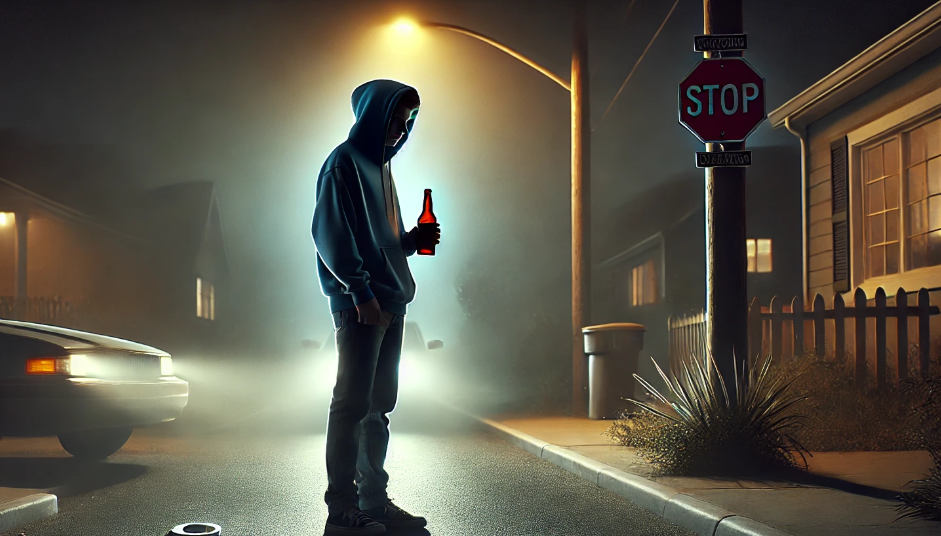How Teens Can Say No Without Losing Face
“C’mon, just one sip won’t kill you!” “Everyone’s trying it – don’t be lame.” Many teens have heard lines like these from friends or classmates urging them to drink alcohol. Peer pressure is powerful during adolescence – the desire to fit in can nudge even good kids toward risky choices. In fact, peer pressure is a leading risk factor for underage drinkinglibrary.samhsa.gov. The good news is, teens can resist and still save face socially. With the right strategies and a bit of practice, saying “no” can become no big deal.
Understanding the Dynamics of Peer Pressure
First, it helps to know that peer pressure comes in different forms. Sometimes it’s direct offers: “Here, have a beer.” Other times it’s more subtle – just being around others who are drinking can create an unspoken pressure to join. By ages 13–15, friends’ opinions carry a lot of weight, and teens might go along with risky behaviors to feel includedlibrary.samhsa.gov. But remember this: not all peers are drinking. Often, a few vocal people make it seem like “everyone is doing it,” when in reality most might not be. Knowing that fact (as we saw earlier, most teens actually don’t drink regularly) can give a teen confidence that saying no puts them in good company.
Also, real friends won’t ditch you for declining a drink. If someone becomes angry or mocks you for not drinking, that’s a red flag about them, not you. Many teens report that after they firmly say no once or twice, friends actually back off and respect their stance. It’s the initial moment that feels hard. That’s why preparation is key.
Practical Ways to Say “No”
Teens should have a mental toolkit of responses for when they’re offered alcohol. Simple, firm statements often work best – and you don’t owe anyone a long explanation. Here are a few effective lines: “No thanks, I’m good,” “Nah, I’m not into that,” or “I’d get in so much trouble with my parents – not worth it.”library.samhsa.gov. Deliver the line confidently, maybe with a smile, and then suggest something else: “I’ll take a soda though” or “Let’s go dance/play video games/etc.” This shifts the focus away from the alcohol. Another strategy is the “blame an external factor” approach: “I can’t, I have an early practice,” or “I’m on medication, so I can’t drink.” Even if it’s not true, a white lie to avoid drinking is not going to hurt anyone – do what you need to do to exit the situation safely.
Role-playing these responses can really help. Parents or mentors can practice with teens at home: “Okay, I’m your friend offering you a drink at a party – what do you say?” Running through scenarios builds muscle memory, so when the real moment comes, the words roll off more naturallylibrary.samhsa.gov. It might feel awkward to practice, but it’s like rehearsing lines for a play or moves for a sport – you’ll be glad you did when under pressure.
Another tip: use the buddy system. If you have even one friend who also doesn’t want to drink, go to parties together and have each other’s backs. It’s easier to resist as a team. You two can even develop a coded signal or excuse to leave if things get too intense (for example, texting a family member a pre-set emoji that means “come pick us up now”). Remember, it’s perfectly okay to remove yourself from a situation – stepping outside for a phone call or heading home – if you feel things are getting out of hand.
Keeping Your Social Status Intact
Teens often worry that saying no will label them as uncool or that they’ll lose friends. In reality, many peers quietly admire the one who has the guts to stick to their values. You might even influence someone else who was looking for an out – your refusal could give them permission to say, “Yeah, me neither.” Over time, people will know you as someone who doesn’t drink, and most will respect that and stop pressuring you. It can even become part of your personal brand in a positive way (e.g., “She’s the one who’s serious about soccer and doesn’t party – that’s why she’s so good.”).
For parents and teachers: let’s equip our youth with these skills and reinforce them. SAMHSA’s “Talk. They Hear You.” campaign suggests empowering kids with ways to handle peer offerslibrary.samhsa.govlibrary.samhsa.gov. Encourage teens to come up with a few go-to lines they feel comfortable with. Make sure they know they won’t disappoint you by saying no to peers – in fact, they’ll make you proud. And importantly, assure them you’re always a phone call away if they need an “exit strategy” from a bad scene.
Call to Action: To the teens reading this – try coming up with your own refusal lines. Write down two or three responses you could give if someone asks you to drink. Say them out loud in the mirror until you feel confident. And to parents, take some time this week to talk about peer pressure with your teen. Ask them if they’ve ever been in a situation where they felt pressured and brainstorm together how to handle it next time. By normalizing these conversations, we take the stigma and fear out of saying “no.” In Salmon, let’s foster a culture where teens support each other’s healthy choices – and where having fun doesn’t have to involve alcohol at all.
Sources: SAMHSA “Talk. They Hear You.” campaign, MADD, CDC


Comments
Post a Comment